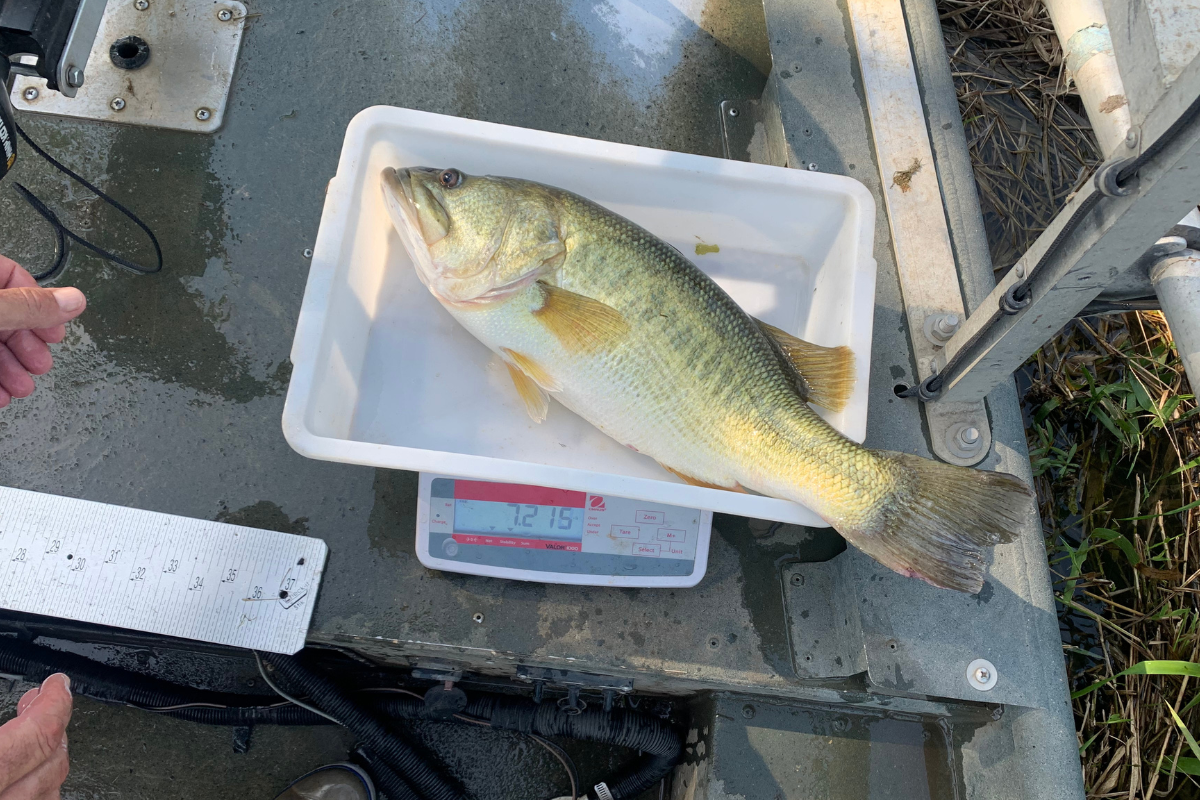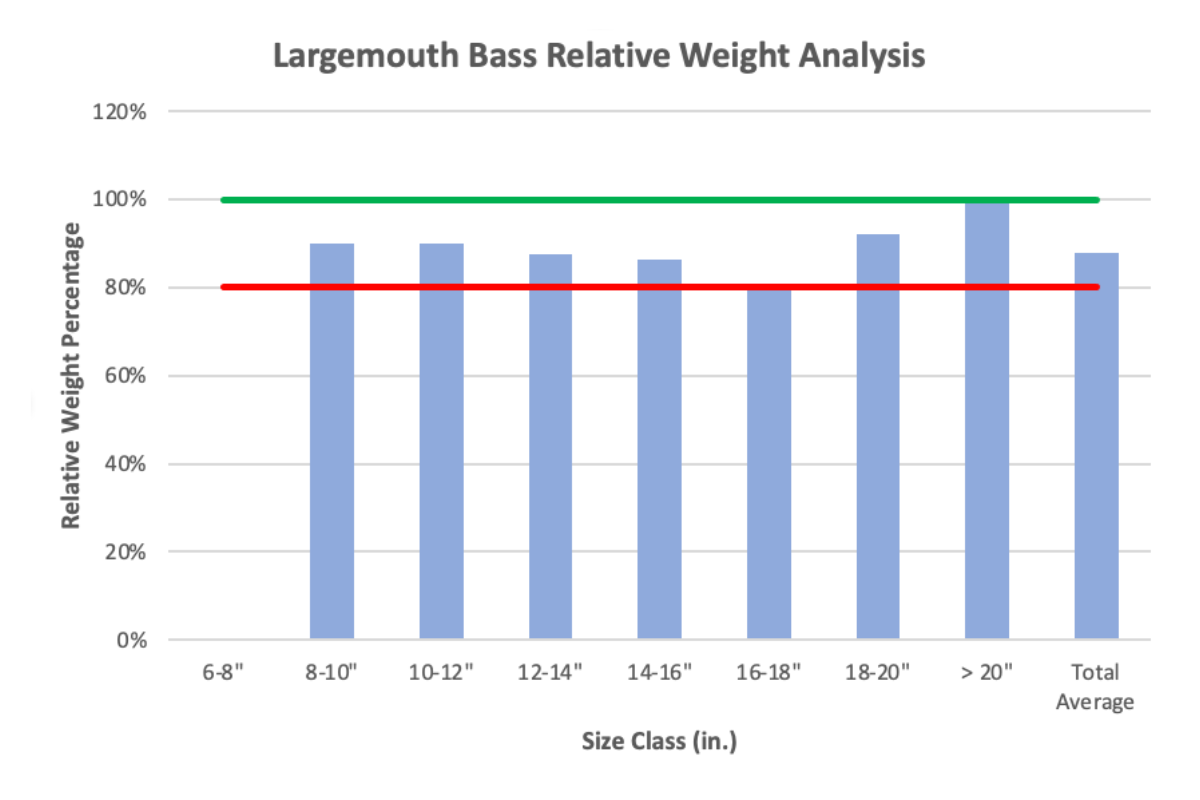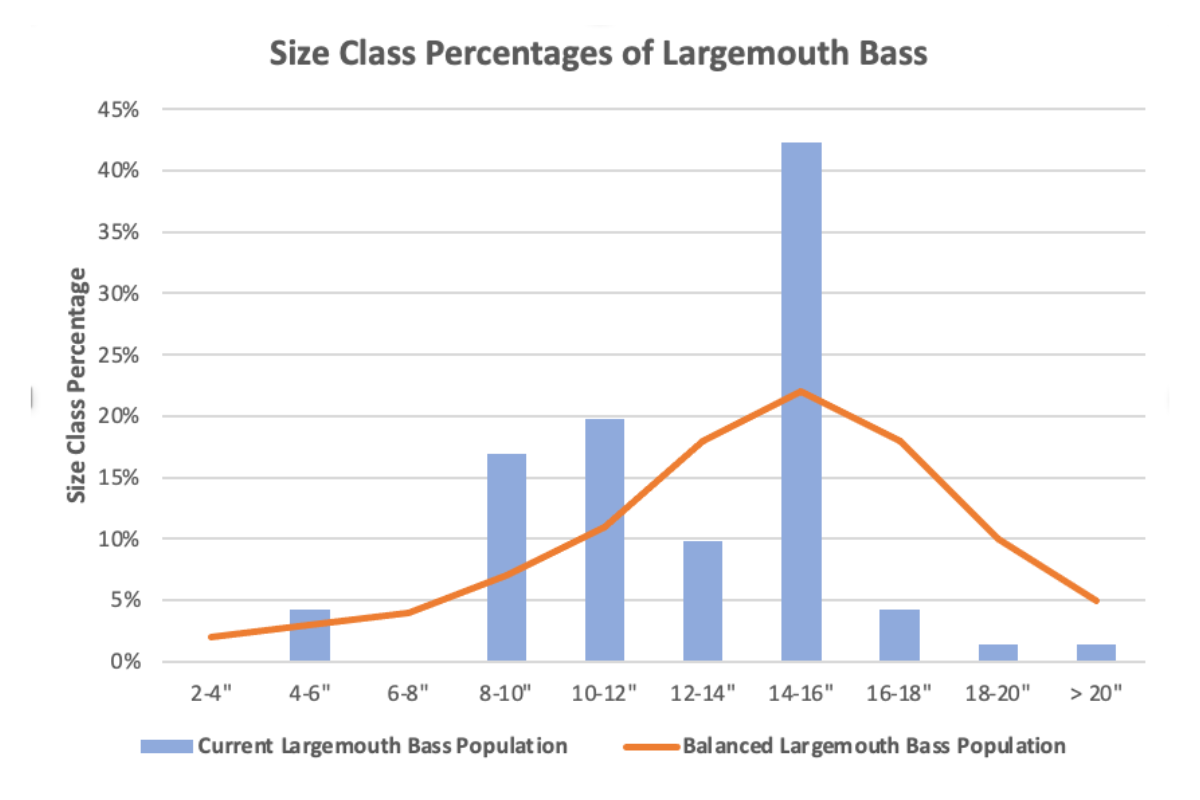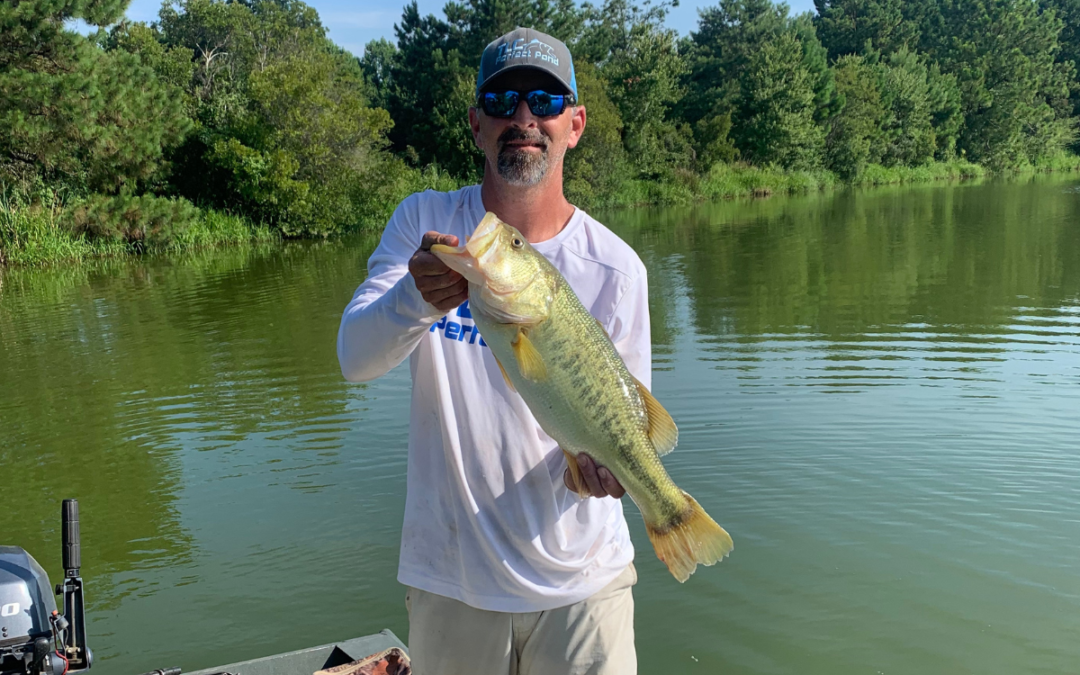Have you ever fished a pond that was loaded with decent largemouth bass, but no trophies? This is usually due to an overabundance of largemouth bass in certain size classes. It can be very frustrating for a pond owner or fisherman. Catching a lot of bass is fun, but you’d like to hang a big one every now and then.
Below we’ll share results from an electrofishing survey performed on a 7 acre pond in south Georgia. The data collected from this survey provide a great example of what can happen when prey species aren’t sufficiently abundant and harvesting pressure is minimal.
This pond had a maximum depth of 9.5 ft and an average depth of 4 ft. Vegetation was sparse around the edges of the pond and included Torpedograss, Cattail, and Alligator Weed. The lack of vegetation was likely to blame for some of the insufficient prey populations we noticed, which we’ll discuss further in the blog.

Relative Weight by Size Classes
We performed an electrofishing survey on this pond for 40 mins to ensure we collected a quality representation of the fish populations in the pond. When we sample a pond, we assume that our catch represents about 20% of the fish in the pond. Ideally, the CPUE (catch per unit effort) for largemouth bass should be less than 40 per hour. However, we had a 338 fish/hr CPUE on largemouth bass in this pond.
When we look at the relative weights of largemouth bass in the pond divided into size classes, we can see that the fish were relatively healthy. Only one size class (>20″) was at 100% of the standard weight for largemouth bass in that size class, but the others weren’t terrible. While there’s definitely room for improvement, these are not the worst numbers we’ve ever seen.

Distribution of Fish in Size Classes
While the relative weight data wasn’t particularly alarming, the distribution of largemouth bass in the size classes was. For purposes of our surveys and reports, we divide largemouth bass into 2″ size classes. We then look at the number of fish caught in each of those size classes to determine if the largemouth bass population is balanced or close to balanced.
The figure below shows that this pond had an overabundance of largemouth bass in the 8-10″ and 10-12″ size classes, and a significant overabundance in the 14-16″ size class. This is a perfect example of a bass population that is unbalanced. This is usually due to lack of harvesting, and it was in this case.
When fish aren’t actively harvested from a pond, the top predators can become overabundant. The pond owner informed us that the pond doesn’t get fished often and the fish aren’t usually harvested after being caught. As a result, we see stacking in certain size classes due to overabundance.

How Do We Solve This Issue
Recommendations for this pond included harvesting largemouth bass and stocking more bluegill for the bass to eat. We recommended that the pond owner harvest 175 pounds of bass each year — approximately 25 pounds per acre per year. That might sound like a lot of fish, but reducing a severe population imbalance like this takes significant harvesting effort.
We suggested that the pond owner only harvest fish that were below 90% relative weight. We want to keep the healthy, robust fish in the pond and remove those that are skinny and underweight. We also suggested focusing mostly on the 14-16″ size class since this was size class where we noted the largest overabundance.
During the population survey, we also noticed a lack of bluegill in the 5-6″ and 6-7″ size classes. This could also be causing some of the stacking in bass size classes as there are not enough bluegill for those larger bass to eat. As a result, we recommended stocking 3500-4000 4-6″ bluegill and a load of threadfin shad to boost the prey populations.
Let Up Help Improve Your Pond!
If you’re in the south GA or north FL areas and would like a population survey on your pond or lake, complete this form and we’ll contact you to schedule a time to meet. We look forward to turning your pond into a productive fishery for years to come!

